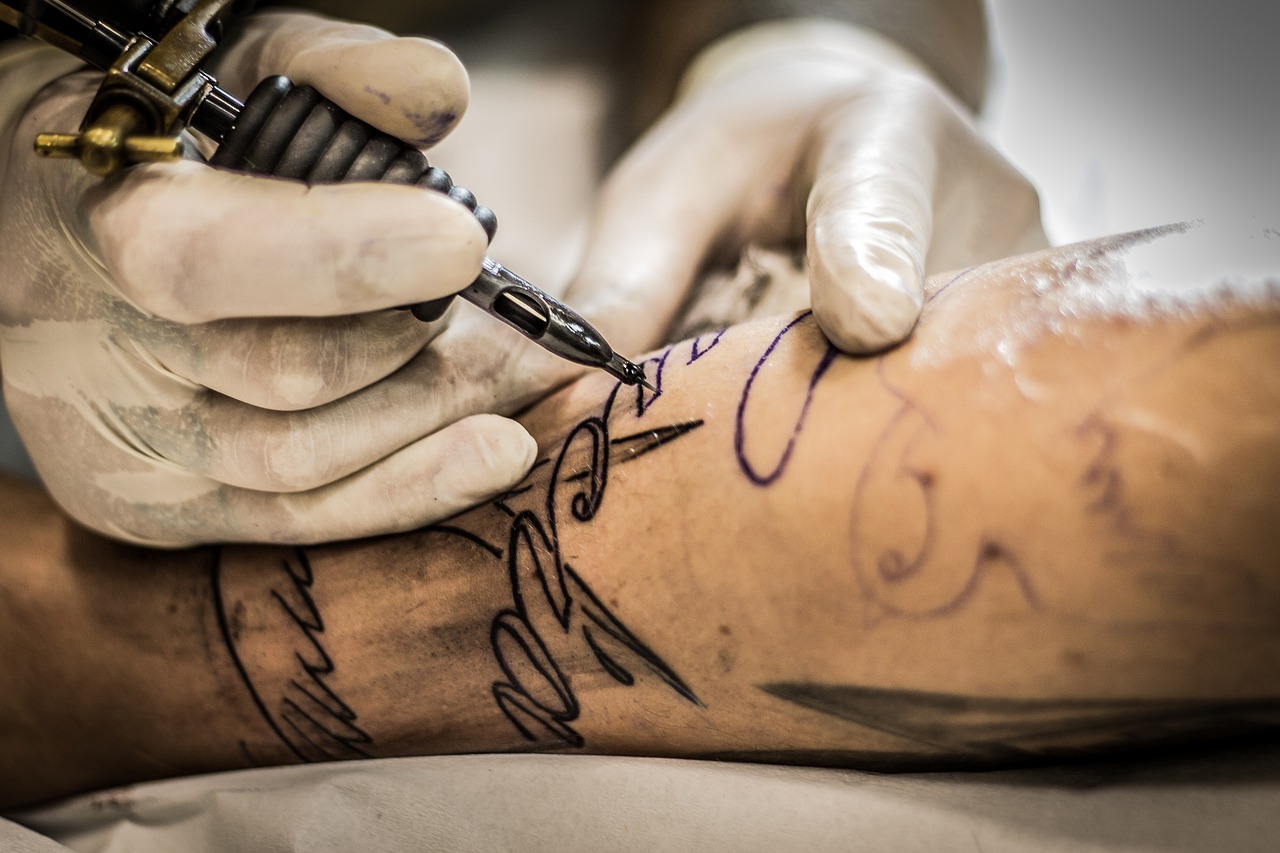17.12.2024
The health risks of tattooing

Tattooing is more popular today than ever before, and negative prejudice against tattoos and people who have them is slowly becoming less pronounced. Because of this, it is easier to get a tattoo than before. Still, you should inform yourself about the potential health risks to lower them.
A tattoo is a permanent design or mark on your body made using ink inserted into the top layer of the skin. A tattoo machine has needles that pierce the skin and leave a little ink every time. This is why tattoos can hurt and bleed, depending on the part of the body.
One worry is that the ink used can be contaminated with bacteria despite the usual preservatives. Still, it is often unclear whether infections happen because of contaminated ink, bad hygiene regarding the tattooing process, or unhygienic behavior after the tattooing. The good news is that the tattoo industry is always trying to find ways to be more hygienic, like one-way ink containers that prevent potential microorganism contamination.
A part of the ink used stays in the top layer of the skin, forming the tattoo, while another part is transported through the lymphatic system away from the skin and into other organs or to be extracted. Colored lymph nodes near tattooed areas are a known phenomenon.
Ink can cause an allergic reaction, commonly manifesting as an itchy rash in the tattooed area. Red ink has been found to cause these allergic reactions more often, and they can occur even years after the tattoo has been done. In some extreme and very rare cases, allergic reactions a few hours after the tattoo have led to anaphylactic shock and hospitalization.
Skin infections are possible because the tattooing process pierces the skin. They are often the result of contaminated ink or tools that haven’t been adequately sterilized. The best way to prevent all tattoo-related complications is to follow safety and hygiene guidelines.
If the tools are not adequately cleaned and maintained, they can spread blood and diseases like hepatitis.
Insisting on hygiene and safety is vital. Professional, trained tattoo artists in legitimate studios will be a safer choice. The artist must wash their hands and wear fresh disposable gloves. All the tools required must be for one-time use, while those that must be used multiple times must be sterilized and disinfected.
Maintaining the tattoo after the healing process is also essential. Carefully follow the tattoo artist's instructions, stay hygienic, and avoid sunlight and swimming.
If you think your tattoo might be infected and isn't healing correctly or that you might be having an allergic reaction, contact a doctor, dermatologist,t or other qualified healthcare expert.
This text is intended for informational purposes only. If you experience any symptoms, it is recommended that you seek advice from your doctor or a qualified healthcare professional.
Bäumler, W. (2016). Tattoos and their potential health consequences. Deutsches Ärzteblatt International. https://doi.org/10.3238/arztebl.2016.0663
Thinking of getting a tattoo? Know what to expect. (n.d.). Mayo Clinic. https://www.mayoclinic.org/healthy-lifestyle/adult-health/in-depth/tattoos-and-piercings/art-20045067
Your trusted partner in finding medical information. We offer access to reliable resources and make it simple for you to get in touch with qualified medical service providers. Our goal is to assist you in achieving optimal health through dependable information and ongoing support, whether it's advice, a physical examination, or expert consultation.